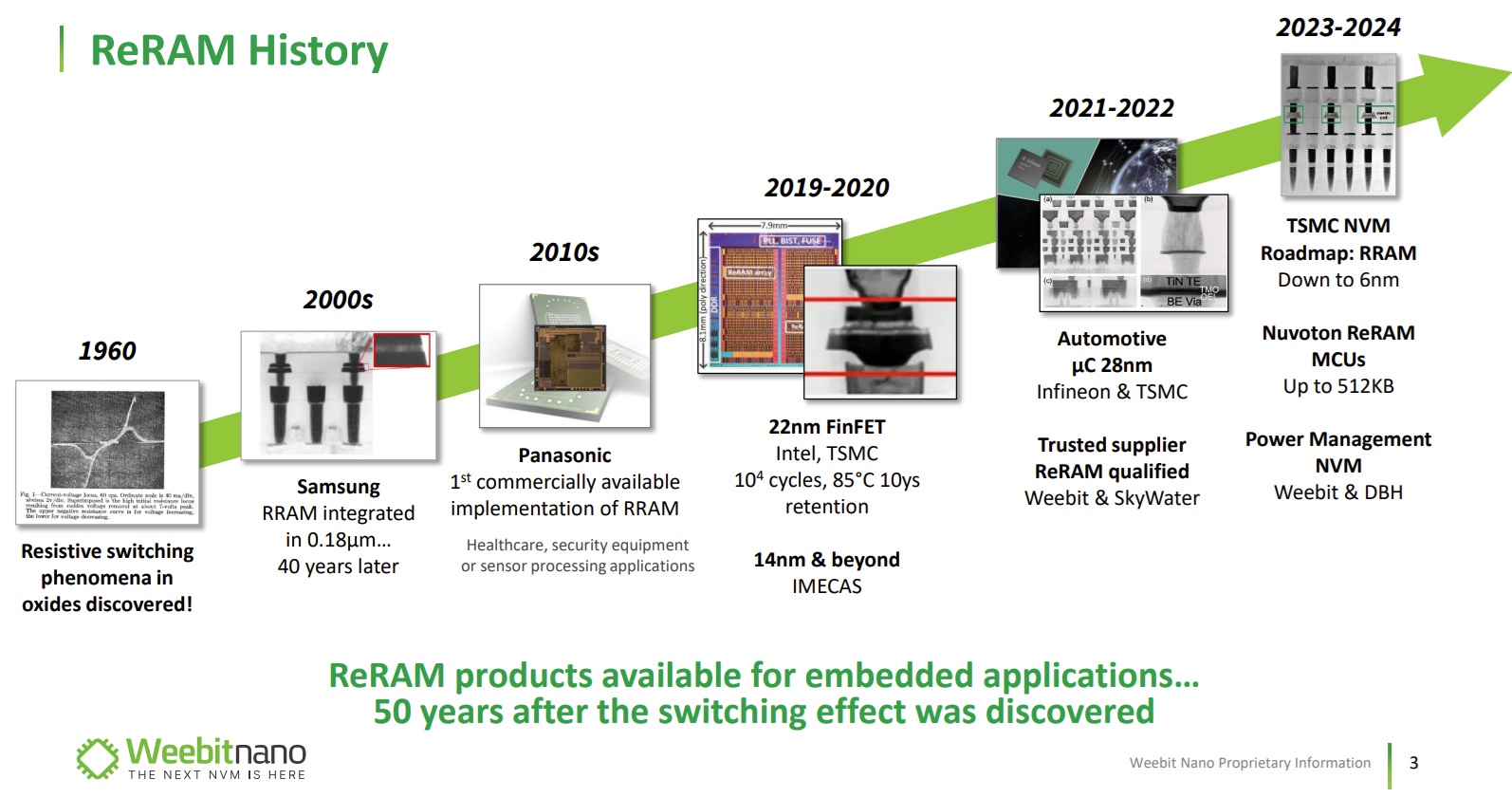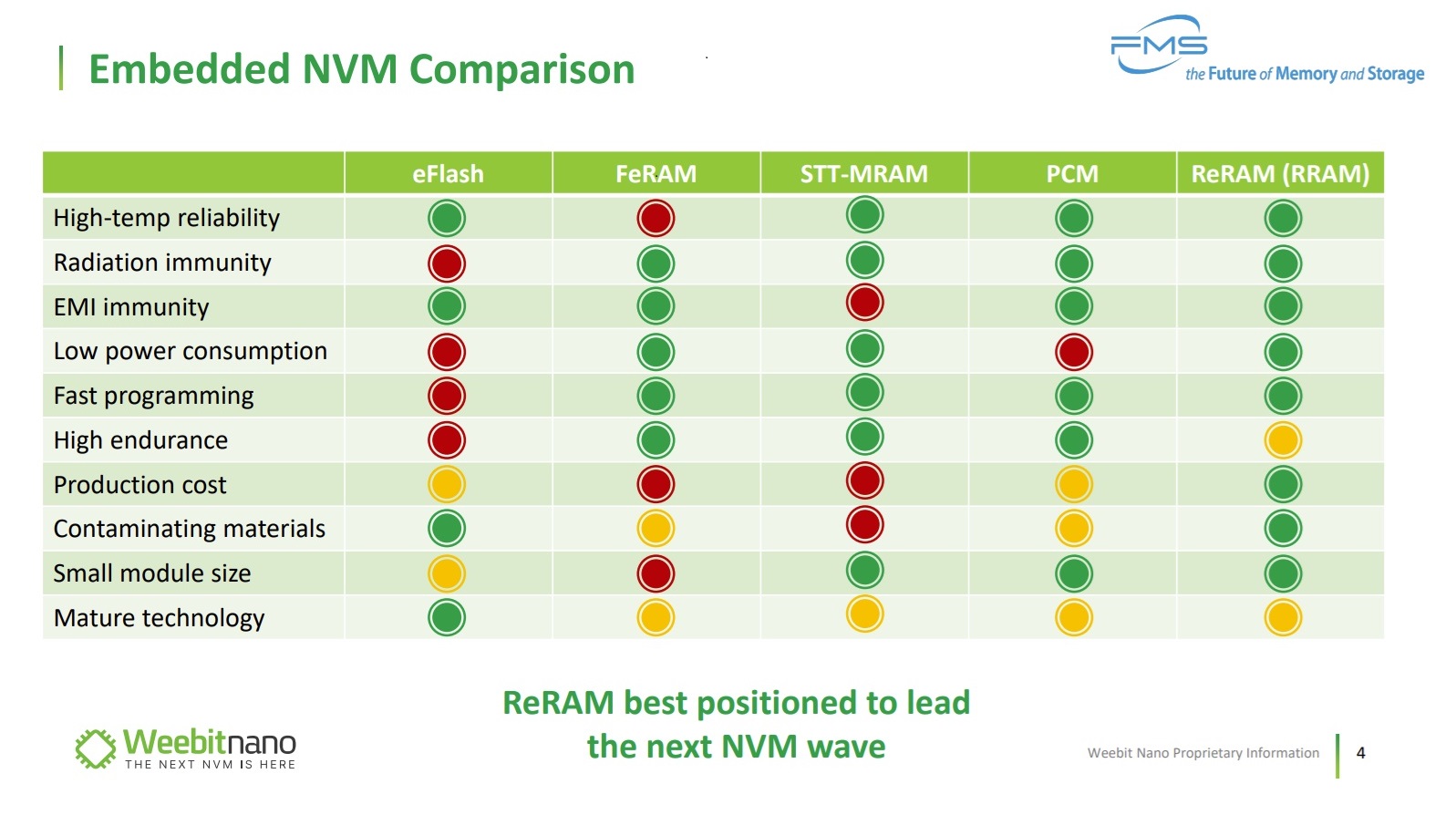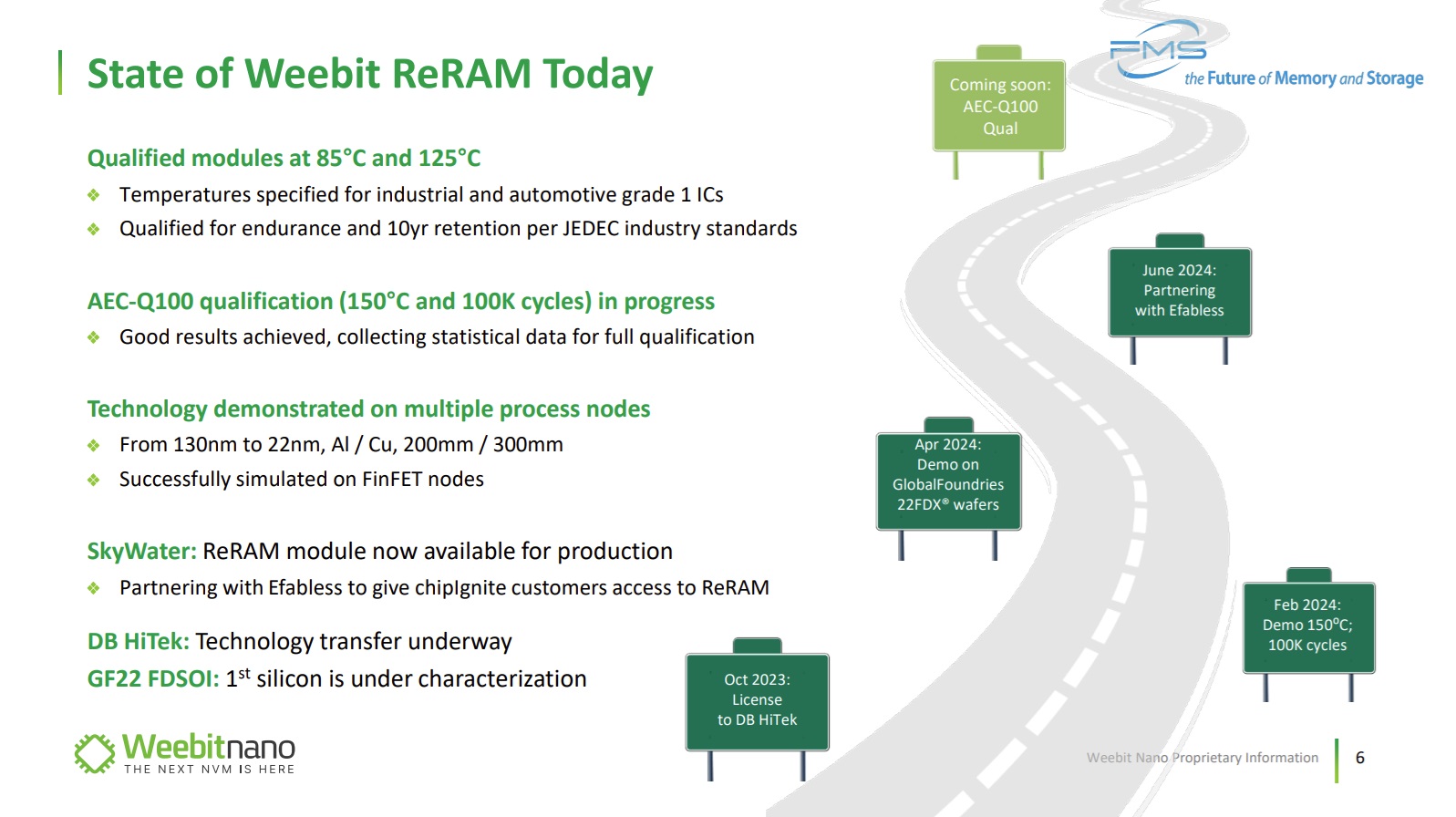This year’s Future of Memory and Storage Conference (formerly the Flash Memory Summit) was again very well attended. The Santa Clara Convention Center is definitely the place to be for a Silicon Valley Conference.
This post is about the Emerging Memories session organized by Dave Eggleston. We will be covering other sessions but this was my #1. Having been in the embedded memory space for a good part of my career I know there is a serious Moore’s Law scaling problem and it will be interesting to see what new technology comes out on top.
Here is the session abstract:
In this session, we discuss emerging memories. Ultra-High Speed Photonic NAND FLASH technology revolutionizes memory operations by achieving ultra-high speeds with lower voltages and power consumption. This technology combines vertical NAND FLASH transistors with lasers/LEDs and photon sensors for efficient READ operations. ReRAM is now mainstream in applications such as automotive and edge AI due to its low power, scalability, and resilience to environmental conditions. We will explore the technology enhancements needed for wider adoption and the latest developments in advanced processes. ULTRARAM boasts exceptional properties like energy efficiency and extreme temperature tolerance, making it ideal for space and high-performance computing applications. We will highlight progress in fabrication processes and potential applications. Finally, we will discuss life beyond flash and the future of memory technologies like MRAM, ReRAM, PCM, and FRAM. Analysts will explore the impact on computer architectures, AI, and the memory market in the next 20 years, emphasizing the inevitability of transitioning to emerging memory types.
For me ReRAM is a top contender. Amir Regev, VP of Quality and Reliability at Weebit Nano presented: ReRAM: Emerging Memory Goes Mainstream which was very interesting. Here is the abstract. Weebit also has a lot of information and instructional videos on their website which is quite good.
ReRAM today is being integrated as an embedded non-volatile memory (NVM) in a growing range of processes from 130nm down to 22nm and below for a range of applications: automotive, edge AI, MCUs, PMICs and others. It is low-power, low-cost, byte-addressable, scales to advanced nodes, and is highly resilient to a range of environmental conditions including extreme temperatures, ionizing radiation and electromagnetic fields. In this session, Weebit will discuss what technology enhancements are needed to proliferate ReRAM even further into applications with extended requirements. We will discuss the latest technical and commercial developments including data in advanced processes.
For those of you who don’t know Resistive Random Access Memory (RRAM or ReRAM) is a type of non-volatile memory that stores data by changing the resistance of a material. Unlike traditional memory technologies like DRAM or flash memory, which store data using charge. Amir reminded us that RERAM is not new and I do remember past RRAM discussions at some of the top semiconductor companies and certainly at TSMC.

 Jim Handy also presented. Jim is one of the most respected embedded memory analysts and a blogger like myself. You can find him at https://thememoryguy.com/.
Jim Handy also presented. Jim is one of the most respected embedded memory analysts and a blogger like myself. You can find him at https://thememoryguy.com/.
Here is Jim’s presentation abstract:
Flash memory has scaled beyond what was thought possible 20 years ago. Can this continue, or will an emerging memory technology like MRAM, ReRAM, PCM, or FRAM move in to replace it? Are there other memory technologies threatened with similar fates? What will the memory market look like in another 20 years? This talk will explain emerging memory technologies, the applications that have already adopted them in the marketplace, their impact on computer architectures and AI, the outlook for important near-term changes, and how economics dictate success or failure. Noted Analyst Jim Handy, and IEEE President Tom Coughlin will present the findings of their latest report as they discuss where emerging memories complement CXL, Chiplets, Processing In Memory, Endpoint AI, and wearables, and they explain the inevitability of a conversion from established technologies to new memory types.
I invited Jim to be a guest on our Semiconductor Insiders podcast to talk to him in more detail so stay tuned.
Bottom line: If you are currently researching embedded memory my advice is to look to the foundries. Foundry silicon reports do not lie.

Also Read:
Weebit Nano at the 2024 Design Automation Conference
Weebit Nano Brings ReRAM Benefits to the Automotive Market
ReRAM Integration in BCD Process Revolutionizes Power Management Semiconductor Design
Share this post via:




Comments
One Reply to “Emerging Memories Overview”
You must register or log in to view/post comments.